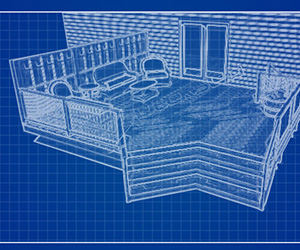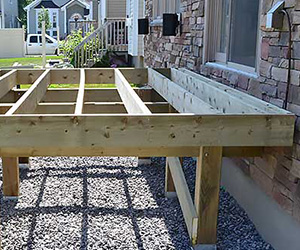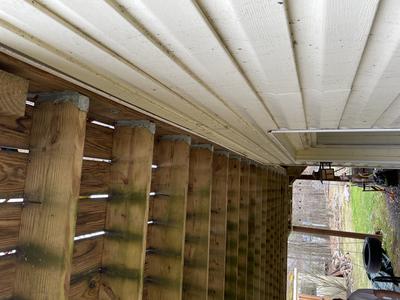DECK FOOTINGS AND FOUNDATIONs
Planning & installing Footings to build a solid foundation for your deck

STEP 1: take a look at your site
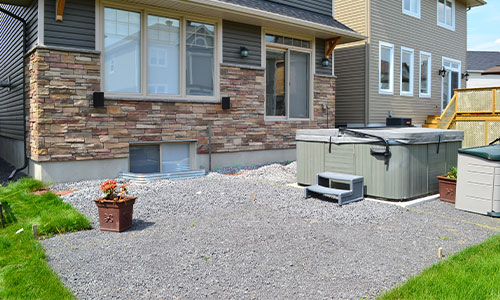
Your work site is like a painter's empty canvas before the masterpiece emerges. So sketch out the shape of your deck and get a sense of the foundation it will need. Consider decking direction, joists, beams and then the footing locations will quickly emerge.
For more details on site location for your deck read this: Deck Building - Preparing Deck Site Before Construction Begin
STEP 2: mark out the shape of the deck
Loosely layout the shape of the deck with a hose or string, or spray paint a line and then remove any sod. Expose the soil and generally clean the work area prior to excavation.
Ensure there are no underground services in the area where you will be digging.
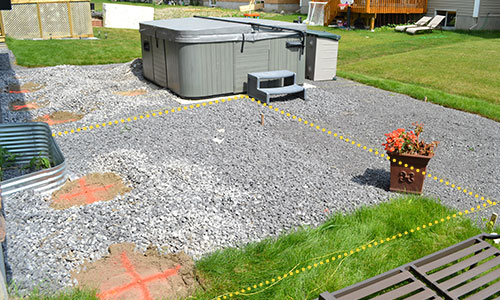
STEP 3: LAYING OUT THE FOUNDATION
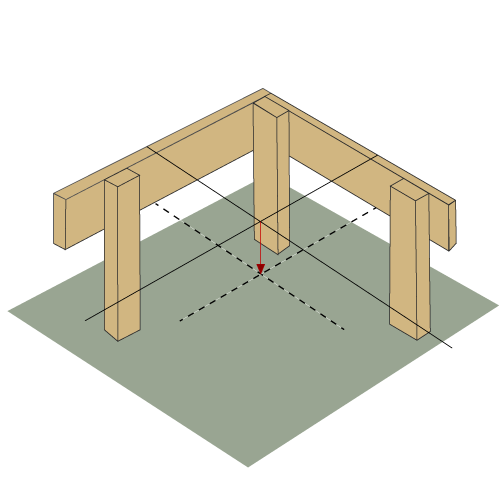
Step 1 - batter boards are your friend
Use batter boards to support string (masonry string) which will demarcate the beam locations.
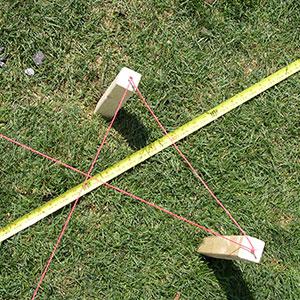
Step 2 - Calculate
Use triangulation and the Pythagorean hypotenuse formula to help you layout accurate locations for the holes that you will dig. Use our angle calculator
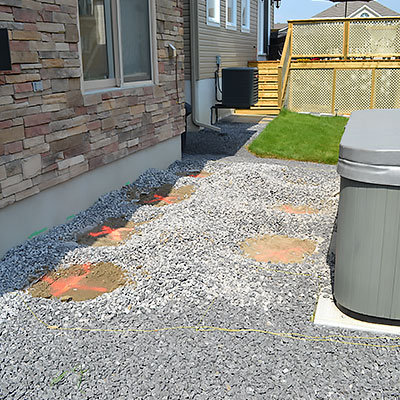
Step 3 - mark footing locations
Locate the positions of the footings and mark each of them with a large "X". You will see the importance of this later.
making batter boards from scrap lumber
Batter boards are easy to make using 2x4s and should be set several feet beyond the perimeter of the deck so they can be used throughout the excavation process. For more details on marking out the foundation elements of your deck read: Deck Building - Footing, Pier and Beam Placement
Here is how to set them up around your site to help locate where each footing will be:
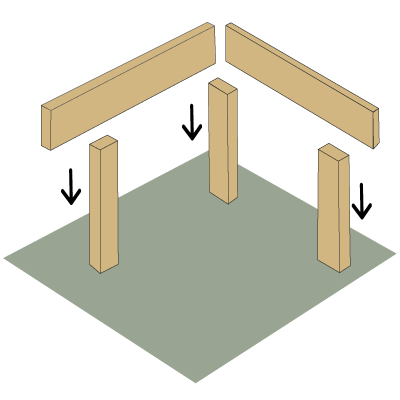
Drive stakes into the ground three or four feet beyond the perimeter of the deck.
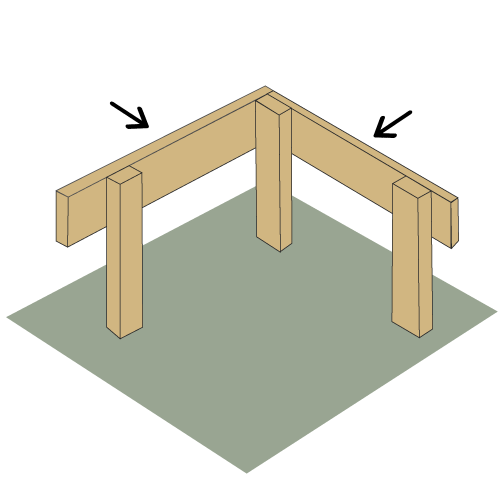
Screw horizontal 2x4s to the vertical members. Your string will rest on the horizontal boards.

Once all batter boards around the deck are up, set up string to mark the edge of the deck or the beam lines and use a plumb bob to locate critical locations.
Before you dig
Building a solid foundation for you deck takes a lot of work. But it can all be for not if you don't follow a few very important steps.
If you dig too shallow and not wide enough the pier can be pushed up with frost heave. If your footing width is wider than the thickness it can crack and break apart.
Here are the various ways of building your footings so they endure.
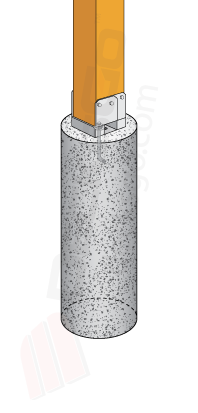
A STRAIGHT CONCRETE PIER
This is a great dependable style of footing that uses a standard concrete form without any flared or bell shaped bottom.
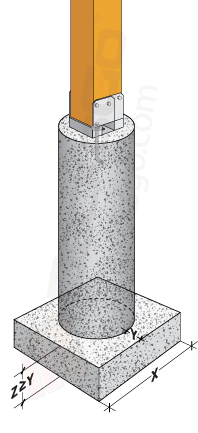
A STRAIGHT CONCRETE PIER WITH A WIDER FLAT FOOTING
Just add a wider base and you substantially reduce the imposed load on the soil below.
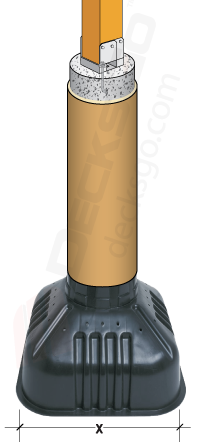
A STRAIGHT CONCRETE PIER WITH A WIDER FLAT FOOTING
Going one step further, use a pre formed bell shaped footing to adapt to a variety of form dimension diameters.
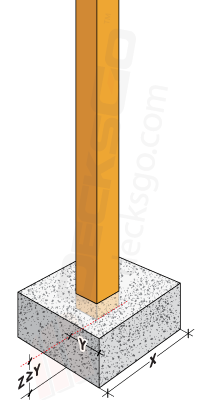
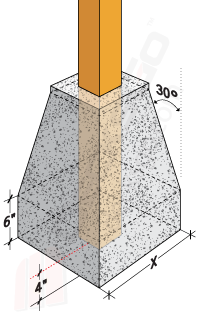
OR USE A BELL SHAPE FORM FROM TOP TO BOTTOM
This footing is not moving anywhere!
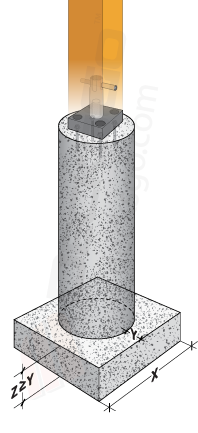
A CONCEALED POST TO PIER CONNECTOR
Concrete deck footings could be visually improved with the "Evolution" Compression Post Base.
Now, it's time to decide whether you need to dig footings and pour cement or if you can avoid digging and use an alternate foundation footing system.
Here is how Install a traditional concrete deck foundation or if you can build a free standing deck here are other ways of saving time, money and effort with alternative footing systems.
let's dig! Installing concrete deck foundations
STEP 4: DIGGING HOLES

Digging is hard work. You can dig by hand using a clam shell digger and a pry bar or bring in the machinery and an auger.
By marking large X's for each footing location you will easily see each footing location even as soil accumulates around the site. And if the batter boards are still standing you can quickly run your string lines again to verify each location.
Set forms into the holes in preparation for the cement.
For more details about digging footings read: Digging Holes For Footings And Piers
STEP 5: POURING CONCRETE
Set up a mixer and start mixing cement. You can use pre-mixed bags and our concrete calculator to help you plan the number of bags you will need.
Or buy some sand, stone and portland cement and mix it the old fashioned way. In either case, that mixer is going to save you some time and effort on a big project.
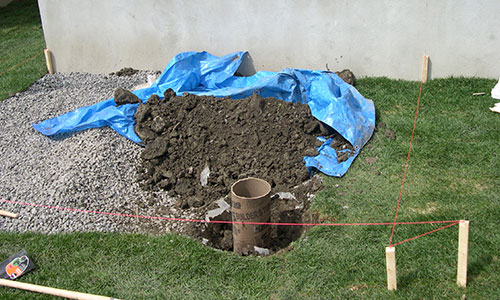
If you are using J bolt anchors for your post bases, be sure to have your string back on the batter boards once the cement is all poured and still wet. Verify the exact locations of the post bases so they all align.
Other important articles
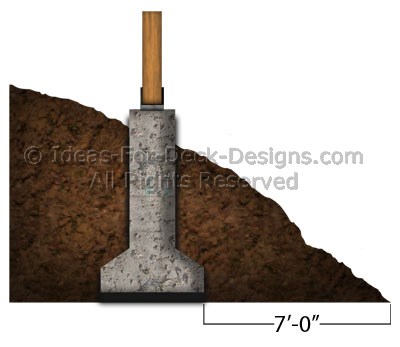
INSTALLING A DECK FOOTING ON A SLOPE
What's A Good Rule Of Thumb When Footings Are On A Slope? The general rule for deck footings built on a slope are based on average soil conditions
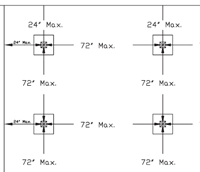
OZ-DECK FOOTING SYSTEM
The OZ-Deck is a ground anchored deck footing system that eliminates the need to use concrete footings for a floating or free standing-deck.
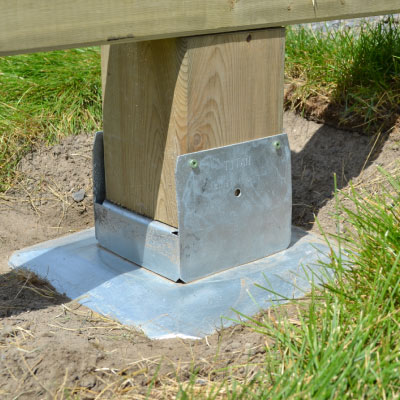
WHAT SIZE OF FOOTING IS RIGHT FOR YOUR DECK?
If you're just joining us, sizing footings for your deck is the topic of discussion.
why dig if you don't have to?
STEP 4: INSTALL "FREE STANDING" OR "FLOATING" footings
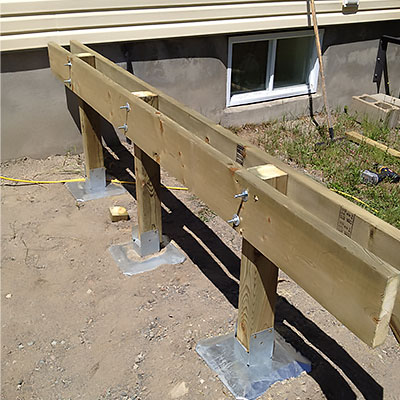
Did you know this?
If your deck is 6 feet or less with proper post to beam and joist bracing, it is a perfect candidate for a floating deck.
This means you have options for your deck foundation that can save you time, money and effort.
Here are your deck footing options:
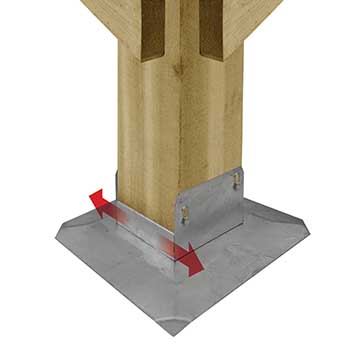
Ground Screw Anchored Footings
The Titan Deck Foot Anchor is a fast and easy solution for supporting any light weight structure that is floating or free standing from a house.
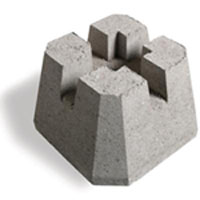
Surface Deck Blocks
The cheapest deck foundations are concrete deck blocks that just sit on the ground. The blocks are usually less than $10 apiece
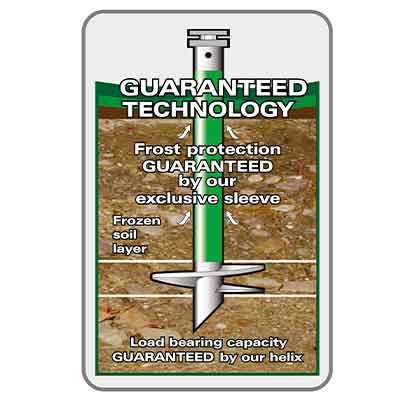
Engineered Helical Piers
Engineered helical piers have been around for a long time and are proven technology. They are designed to be completely frost resistant.
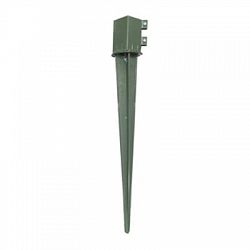
Ground Spikes
Ground anchored spikes are used for fence posts. But some of them use modified load plates and are a good deck foundation option.
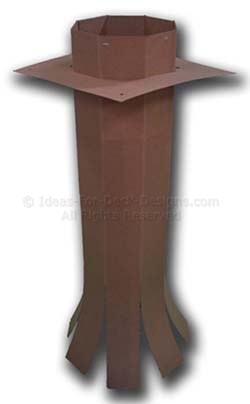
WHAT ARE FLAT CONCRETE FORMS?
If you are fixed on using concrete footings for your deck foundation, then this system is easy to transport because they ship flat and are easy to use. The bell footing is built in to it.
TITAN DECK FOOT ANCHOR
INSTALLING FOOTINGS ... HAS NEVER BEEN THIS EASY. See More
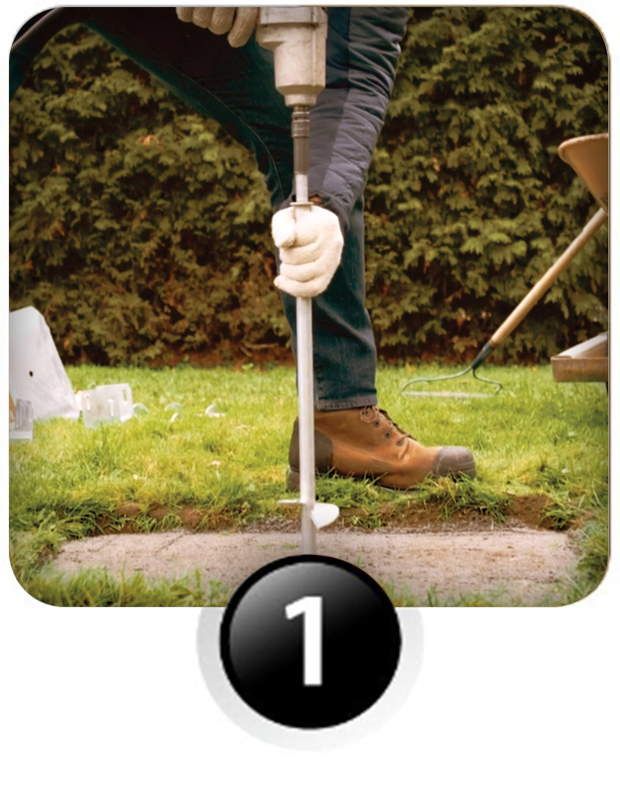
DRIVE
Using a lightweight handheld ½" electric impact wrench and a 12mm six point socket, drive the auger deep into the soil.
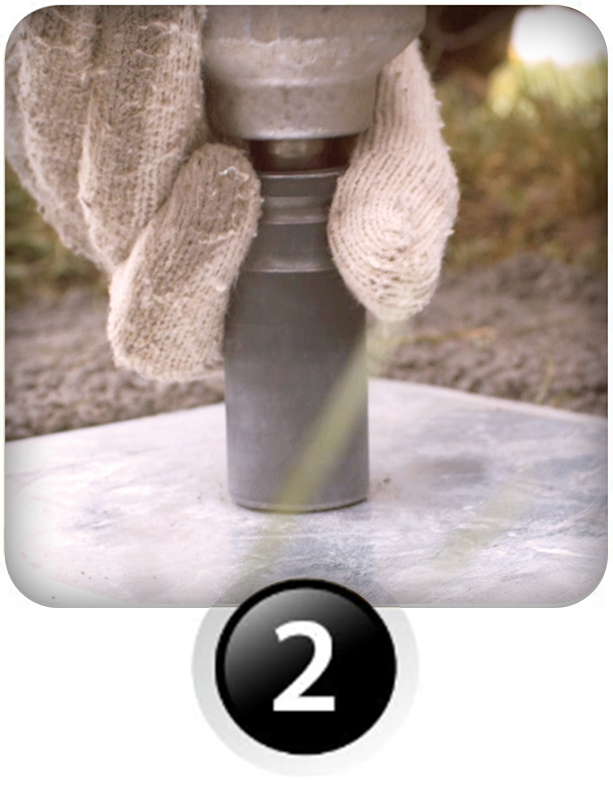
TIGHTEN
Tighten the nut and compress the load plate against stop washer below the load plate.
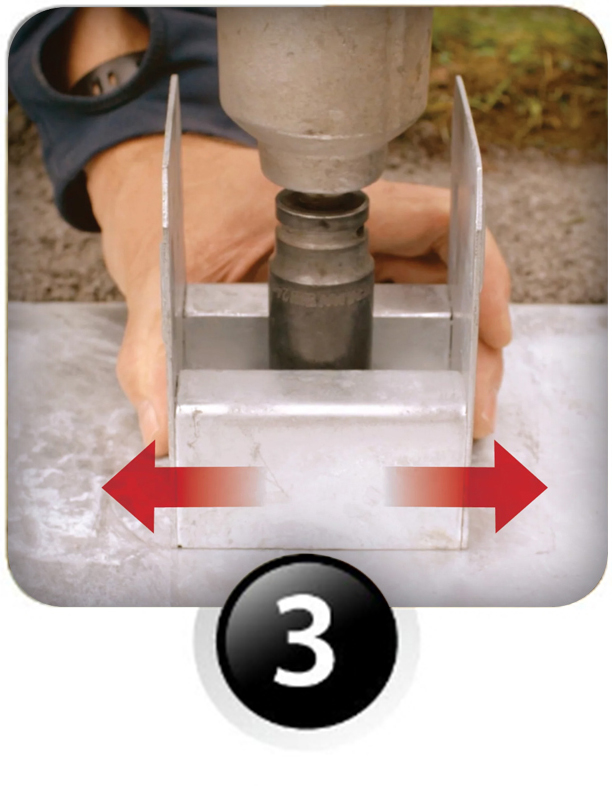
ATTACH
Place the post saddle in the desired location. Tighten the upper nut to attach the saddle to the auger and load plate.
Introducing the Titan Deck Foot ANCHOR
The New Titan Deck Foot with Terra-Shift Technology
When To Use Our Tie Down Ground Anchor
popular topics in the forums
learn more about building decks from builders and people like you. It's like hanging around the office watercooler!
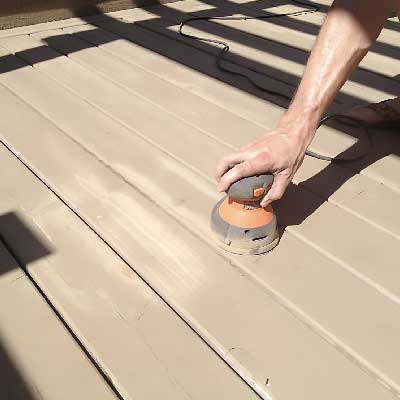
Deck Maintenance and Repair Forums
Everyone wants the investment they put into their deck to last.

DECK FOOT ANCHOR FORUM
Great discussions about using the Deck Foot Anchor™. Listen in and see if it is a good solution for your next project.
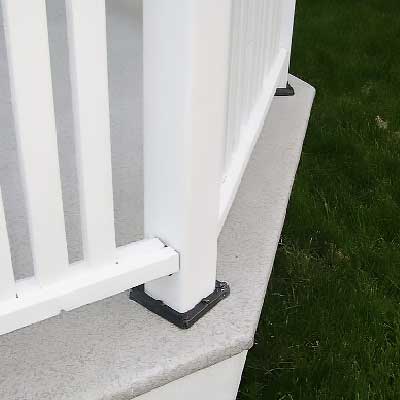
TITAN POST ANCHOR FORUM
The Titan Wood Post Anchor™ is a real work horse and solves a lot of problems. Find out how people use it.
You might also like...
- Home
- Deck Footings Foundations






















